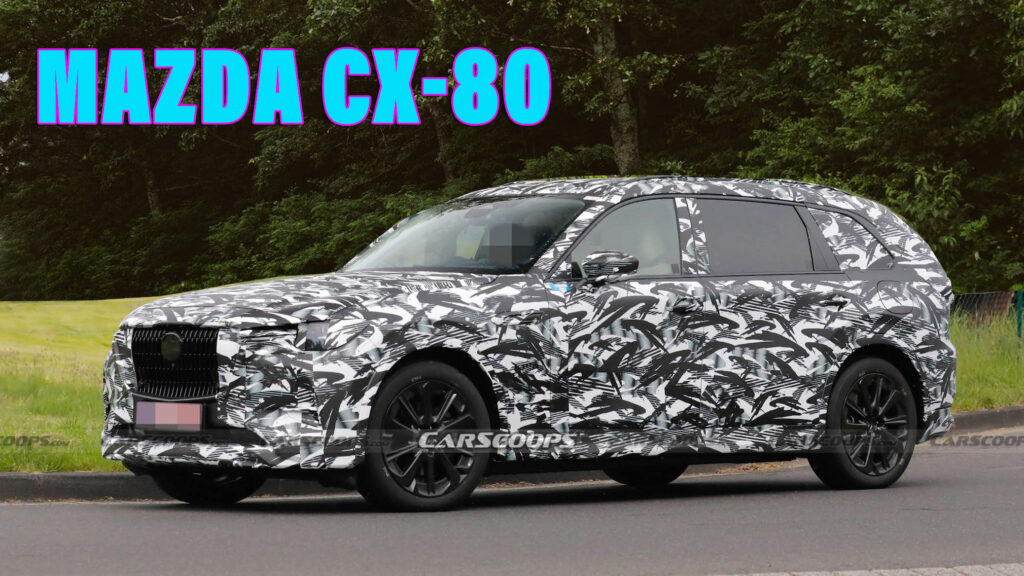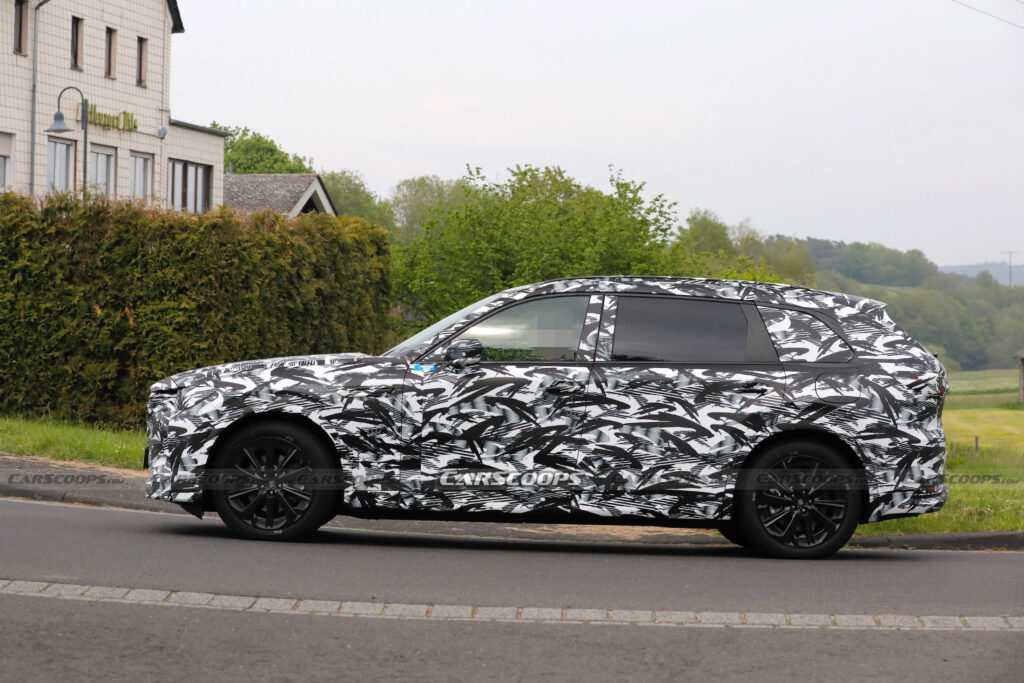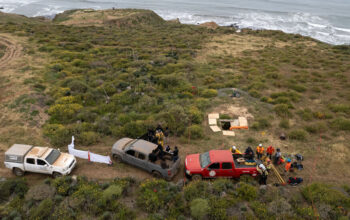CX-80 has a longer wheelbase than two-row CX-60 and a very different D-pillar treatment
1 hour ago
 –>
–> 
–>
Mazda’s assault on the premium turf that’s home to Audi, BMW, Lexus and Mercedes started last year, and is far from over. So far we’ve been introduced to the two-row CX-60 built for Europe, Asia and Australia, and the three-row CX-90 that goes to North America and (confusingly) Australia. Now it’s almost time for Europe to get its seven-seat model, the CX-80.
The CX-80 obviously has a longer wheelbase than the CX-60, which measures 113-in (2,870 mm), but it could come in shorter than the 122.8-in (3,119 mm) of the CX-90 since one of Mazda’s primary justifications for creating different vehicles for North America is that public there wants bigger, roomier SUVs. Well, that’s the theory, though the same BMW X3 and X5 seem to sell equally well around the world.
We’ll have to wait for the full CX-80 launch later this year to discover the exact wheelbase, but what we can say from these images is that the 80 shares the same front end design with the CX-60 and CX-90, but is much closer to the 90 when it comes to the overall styling. The roof stays level as it nears the rear hatch and the D-pillar doesn’t have the CX-60’s sharp kink, both of which should help with visibility and headroom for passengers in the third row.
Related: 2024 Mazda CX-80 Spied As A Super-Sized CX-60 With A Third-Row

But it’s no carbon copy of the CX-90, because even through the disguise we can see that the surround for the rear quarter window is subtly different, featuring a small kink at its base and a swollen lower section of trim. The rear doors are of course bigger than the CX-60’s to help with access to the rear seats, though we expect the interior, with its 12.3-in letterbox-format touchscreen, and the 100 percent AWD engine lineup, to be carried across intact.
That would mean CX-80 drivers would have the choice (depending on market) between a 322 hp (327 PS) naturally-aspirated mild-hybrid inline four, a pair of 3.3-liter turbodiesel inline sixes developing 197 hp (200 PS) and 251 hp (254 PS), and a 3.3-liter petrol inline six putting out 280 hp (284 PS). Mazda could also choose to drop in the more potent version of that engine used in America’s CX-90, which generates 340 hp (345 PS).
advertisement scroll to continue

 <!–
<!– –>
–> 